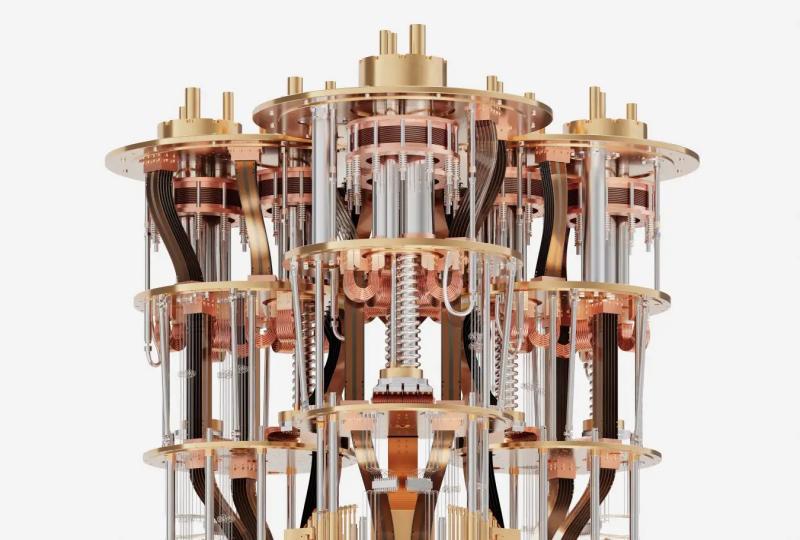Josephson Junction Fabrication: Key to Quantum Computing
2025.03.21 · Blog
In the world of quantum computing, the Josephson junction is a vital component, crucial for the development of quantum circuits, especially in superconducting qubits.
Fabricating these junctions accurately and reliably is a cornerstone of building scalable and functional quantum computers. But what exactly is a Josephson junction, and why is its fabrication so important?
In this article, we'll dive deep into the Josephson junction fabrication process and its role in the quantum computing landscape.
.jpg)
What is a Josephson Junction?
A Josephson junction is a thin insulating barrier placed between two superconducting materials. This structure exhibits unique quantum properties, such as the ability to carry a supercurrent without any voltage drop, thanks to quantum tunneling. These properties are central to many quantum computing systems, particularly those based on superconducting qubits like IBM's and Google's quantum processors.
The Josephson junction forms the heart of the quantum bits (qubits) in superconducting quantum computers. When engineered correctly, it enables the qubit to maintain quantum coherence and perform quantum operations effectively, making it a fundamental building block of the next generation of quantum computers.
The Fabrication Process: Precision and Challenges
Josephson junction fabrication is a delicate process that involves several key steps. These steps must be executed with extreme precision to ensure the junction behaves as intended at ultra-low temperatures. Here's an overview of the typical process:
Material Selection: The first step in Josephson junction fabrication is choosing the superconducting materials for the junction. Common materials used include aluminum and niobium, which are paired with insulating layers such as aluminum oxide.
Deposition: Thin films of superconducting material are deposited onto a silicon wafer. This is done using techniques like sputtering or e-beam evaporation. These films must be uniform and flawless to ensure proper functioning of the junction.
Insulating Barrier Formation: The insulating barrier is the most critical part of the Josephson junction. This is typically a layer of oxide (e.g., aluminum oxide) grown between the two superconducting layers. The thickness and quality of the oxide layer are critical to the junction's performance, as they determine the tunneling behavior of Cooper pairs of electrons.
Lithography: After the superconducting and insulating layers are deposited, photolithography is used to define the pattern of the Josephson junction. This involves shining light through a mask to create a pattern on the material's surface.
Etching: The patterned layer is then etched away to create the junction. This step ensures the junction's dimensions and alignment are precise.
Testing: Once fabricated, the junctions are tested at cryogenic temperatures to ensure they exhibit the desired superconducting properties. The performance of the junction is often tested by measuring its response to microwaves or current biasing.
Key Challenges in Josephson Junction Fabrication
Despite advancements in technology, the fabrication of Josephson junctions remains a challenging task due to the delicate nature of the materials involved. A few key challenges include:
1. Material Imperfections: Any imperfections in the superconducting material or insulating barrier can disrupt the delicate quantum behavior of the junction.
2. Scalability: As the need for larger quantum systems grows, fabricating Josephson junctions at scale, with high consistency, becomes increasingly difficult.
3. Temperature Sensitivity: The junctions must perform well at extremely low temperatures (near absolute zero), requiring sophisticated cryogenic systems to test and operate the junctions.
Applications of Josephson Junctions in Quantum Computing
Josephson junctions are not just important for basic quantum computing research but are also key to the practical deployment of quantum processors. They play a central role in:
Superconducting Qubits: Superconducting qubits, like the ones used in IBM's Q System One and Google's Willow, rely on Josephson junctions for quantum coherence and gate operations.
Quantum Annealing: In systems like those developed by D-Wave Systems, Josephson junctions are crucial for optimization problems that quantum computers are uniquely capable of solving.
Quantum Circuits: Josephson junctions are integral in the creation of quantum logic gates and other quantum circuits necessary for computation in a quantum system.
Future of Josephson Junction Fabrication
As quantum computing advances, the importance of high-quality Josephson junctions will only grow. Researchers continue to innovate and refine fabrication techniques, pushing the limits of what's possible with superconducting qubits.
Innovations in materials science, cryogenics, and nanofabrication will likely lead to more robust, scalable quantum processors in the near future.
Call to Action
Want to learn more about the technology behind quantum computing? Stay updated with the latest trends and research on Josephson junctions and quantum hardware by following industry news and developments from leading quantum computing companies.
Conclusion: Why Josephson Junctions Matter
The fabrication of Josephson junctions is one of the foundational challenges in building reliable quantum computers. These tiny, intricate components are key to enabling the quantum operations that will drive the next era of computing.
As quantum technology continues to mature, so too will the precision and scalability of Josephson junction fabrication, opening the door to a future where quantum computers are a ubiquitous part of our technological landscape.
Featured Content






